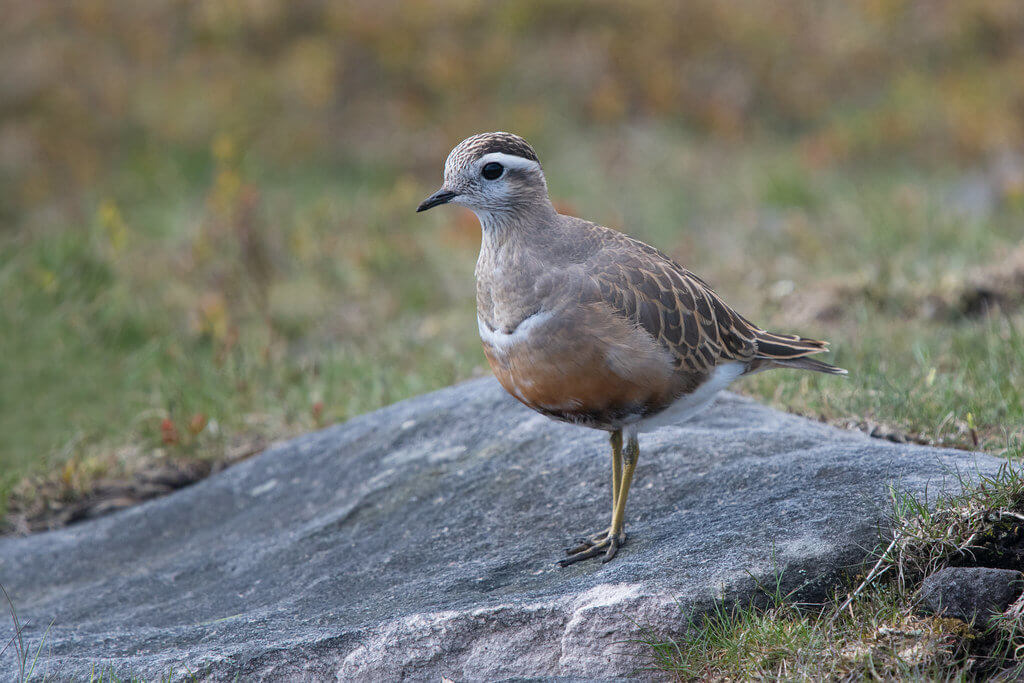
Tim writes: this was one I took of an obliging male Dotterel on Lancashire’s Pendle Hill in late April. I was particularly pleased with this shot as you can even see the semi-palmations between its toes which are obscured when it is in vegetation. An old Norfolk folk name for Dotterel is “Stone Runner” and this one was caught in the act of stone running. Dotterels are rare breeding birds in Britain (630 males in 1999) but have regular “tripping” sites, often on hill tops or in very large fields (they like to see a long way). Pendle Hill in Lancashire is one such regular site where they stop off for a day or two on spring migration.
In most birds, males have the brightest plumage but Dotterels are among a select group where the females are brightest. It doesn’t stop there, as it is the males that incubate the eggs and tend the young while the females compete with each other for another male. The short Arctic summer is the key where superabundant food is concentrated into a few short weeks. Female Dotterels can produce a clutch of eggs much quicker than most birds, leaving males to do all the work, while they try and squeeze another brood or two into the short time window.
The name Dotterel is rather unkind as it means little, stupid bird. The scientific name morinellus means the same, and we get the word “moron” from the same root. This is because they were considered good to eat and their tameness was interpreted as stupidity. This one was indeed tame. I sat quietly and the bird walked towards me, to within a few metres.
[registration_form]
Nice to see them nesting in the Cairngorms and good to get a close look without the need for binoculars.
Wish I could press the like button ten times.
I have one of the buff edged wing feathers, found in a nest scrape on Drumochter.
Trapit – will I see you at HHDay on 11 August. And if I see you, will I get to say hello?
Possibly.
They are memorable and delightful birds in any habitat; whether in pea fields in the lowlands or on the machair of the Uists on their way north, breeding on Scottish mountain tops or in Iberia on their way south…..over many years I’ve been lucky enough to enjoy them in all four.
Finding dotterel when they stop off briefly on the open plains of Spain in autumn when they have reverted to their subdued winter plumage was the most challenging (and achieved just the once)!
As usual from Tim a lovely photograph and accompanying text. Great photo of a splendid species.
Really useful info, Tim. As usual. Many thanks, Katy hockridge. I’m going today. It might be too early but non birfer is taking me so should be a good day out! Hope things going well for you. I miss your talks!